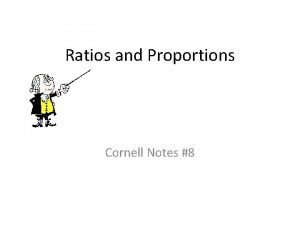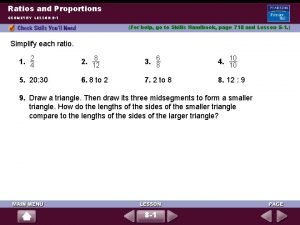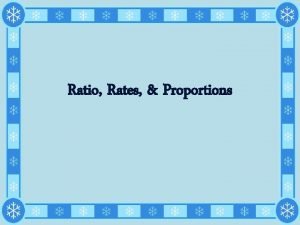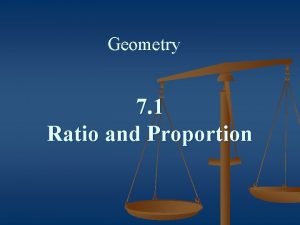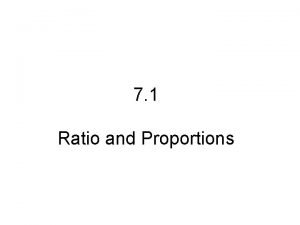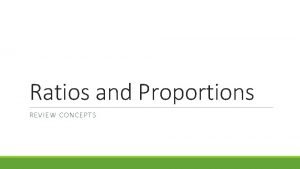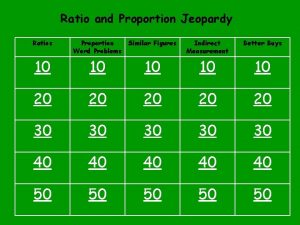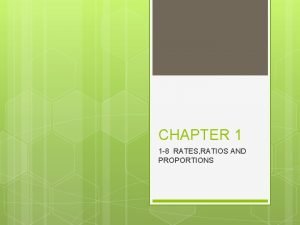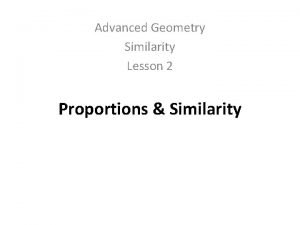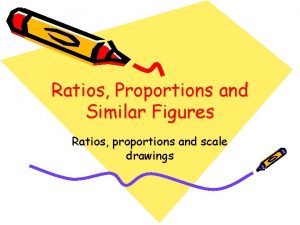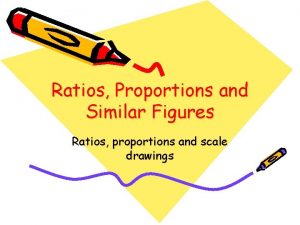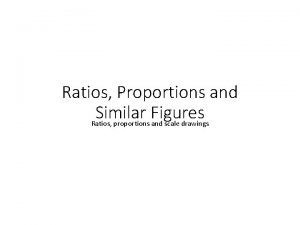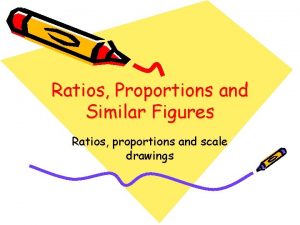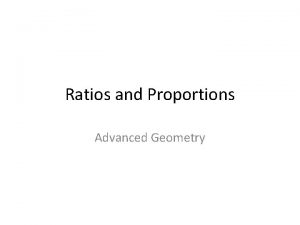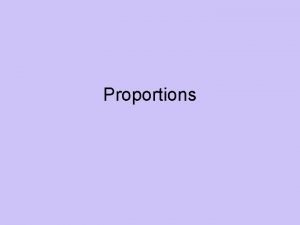Ratios and Proportions Notes Part 8 Recall Proportions










- Slides: 10

Ratios and Proportions Notes. Part 8

Recall Proportions are the comparison of two equivalent ratios. Therefore, proportional relationships are relationships between two equal ratios.

) Proportional Relationships Proportional relationships can be expressed using a ratio table. This ratio table can be turned into a table of values used to create ordered pairs (x, y) for a graph. The graph of a proportional line MUST: • Be a linear function (straight line) • Pass through the origin (0, 0) • Have a constant slope ( )

Examples Determine whether each graph is proportional. Explain.

Unit Rates and Other Points Interpreting Points of Proportional Relationships: The unit rate can be found by looking at the point with the x-coordinate of 1. (1, r) Any other point can be used to express a value at a given point on the line.

Example Your family is driving to Chicago for a weekend getaway. The graph of the journey is shown. What is the unit rate of the graph? What does the unit rate represent? What is meant by the point (7, 420)?

More Graphs and Tables. A ratio table can be used as a table of values to find points on the line. The equation of a proportional relationship will be in the form y= kx, where x is an “input” and k is a constant. This is also called a direct variation.

Example In January, Georgia signed up for a membership at Anytime Fitness. The plan she chose cost $95 in start-up fees and then $20 per month starting in February. Edwin also signed up at Anytime Fitness in January. His plan cost $35 per month starting in February, and his start-up fees were waived. Create tables for both Georgia and Edwin that compare the number of months since January to the total cost of their gym memberships. Continue this table for one year.

Example (ctd). Plot the points from the two tables in part (a) on a coordinate plane.

Example (ctd). Decide if either or both gym memberships are described by a proportional relationship, and write an equation representing any such relationship. Explain how parts (a) and (b) could be used to support your answer.
